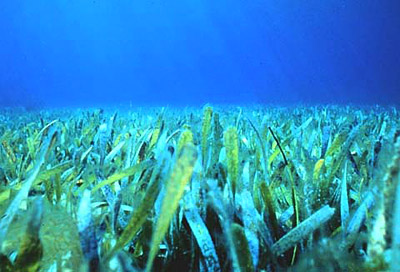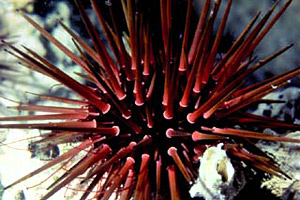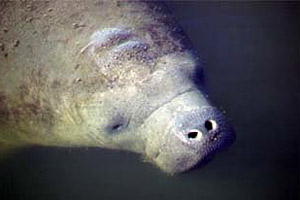Seagrasses are not “true” grasses.
- Seagrasses are found in shallow coastal waters
- Seagrasses provide important habitat for marine organisms

Seagrasses are more closely related to the lilies rather than true grasses. There are over 50 temperate and tropical species of seagrass belonging to two families, with the most diversity occurring in the Indo-West Pacific region.
Seagrasses are found on the bottom of protected bays, lagoons, and other shallow coastal waters. Although they are not true grasses, seagrasses appear grass-like with shoots of three to five leaf blades attached to a horizontal stem. They are attached to the bottom by thick roots and rhizomes, allowing seagrasses to live in areas with wave action and strong currents. Seagrasses can form large underwater meadows, spreading through the extension of the rhizome that produces new plants along the edges of the meadow. Flowering also occurs, producing seeds that are quickly dispersed via currents and tides.

Seagrass communities are important in tropical and temperate marine food webs, providing habitat for a diversity of marine animals. Some animals feed directly on the seagrass blades and roots while others scrape the epiphytes from the seagrass blades. Large predators also visit seagrass beds in search of prey.

Glossary terms on page
- temperate: temperate zone lies between 30 and 60 degrees latitude, climate undergoes seasonal changes in temperature and moisture.
- tropical: tropical zone lies between 23.5 degrees north and south of the equator, has small seasonal changes in temperature and large seasonal changes in precipitation.
- rhizome: the somewhat elongate portion of a plant’s stem that is underground, producing shoots above and roots below.
- diversity: refers to the variety of species within a given association, areas of high diversity are characterized by a great variety of species.